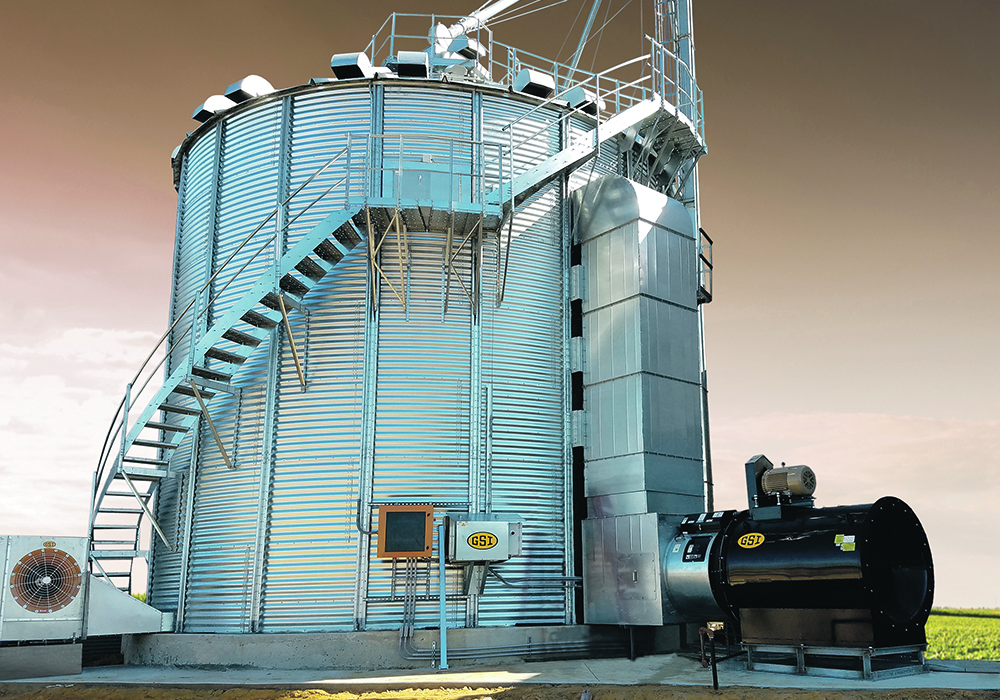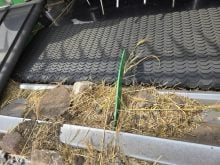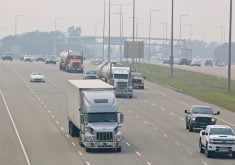Manitoba is corn poor. The province uses more corn than it grows. One of the hurdles preventing corn expansion is the cost of building adequate capacity for drying and storage.
Evan Erlandson’s new grain-handling facility near Altona, Man., will handle three million bushels annually once his two new 190,000-bu. dry bins are standing. His Red River Grain Company began operations in 2021 with a 68,000-bu. wet grain bin married to a GSI TopDry system. He made the decision early in the planning process to use all GSI equipment.
One unusual aspect of the facility is that Erlandson is not a farmer. Another anomaly is that the design of his $3.5 million system is not like something normally found on a farm. The system is intended to serve as an elevator for buying and selling grain. Nor is it on a rail siding. Everything arrives and departs by truck.
He says the new plant should be a positive factor in promoting corn acres, although he will handle other grains.
In an interview, Erlandson says Manitoba is a corn deficit region.
“We need more handling capacity if we expect to bring corn acres up to where they should be.
“This is one of a small number of privately owned grain elevators in Western Canada. I got the idea travelling in the (United) States. They have hundreds of these independent commercial elevators owned either by farmers or by private individuals.”
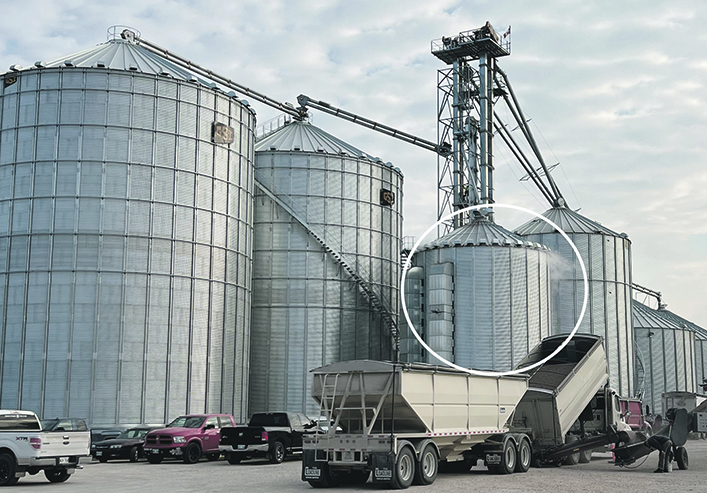
Erlandson’s business plan focuses on buying and selling corn. Cash flow comes from merchandizing the grain. The other services he offers, such as drying and storage, support the merchandizing program. He says ancillary services are not revenue drivers. They are a means of establishing ownership of the grain. Nearly all grain passing through the Red River Grain Company is owned by the company. A small percentage is done on contract for growers.
“I soaked up a lot of information talking to these independent operators in the States. They told me what they had done right and done wrong. It gave me a good starting point. We designed the system. Our local dealer is Wentworth Ag. They made it happen.
“Wentworth deals mainly with on-farm systems. What we planned was something more along the lines of a full commercial elevator. But we got it all put together the way we needed it to function as a fast-throughput commercial elevator.”
Footprint of the facility was a design challenge from the start, with only four acres available. That means trucks haul everything in and out. He did not want traffic jams and long lines of semis.
“In drawing up the placement of component, I’ve made space for the biggest bins I can possibly build without putting piers under them. I expect to add more of these 190,000-bu. dry grain bins. They’re all floating bins. We did the geo-technical load-bearing analysis and then we got an engineer to design the foundation under the bin and tell us the maximum bin we could build. We excavated big pits and back filled with the aggregates and poured our foundations.
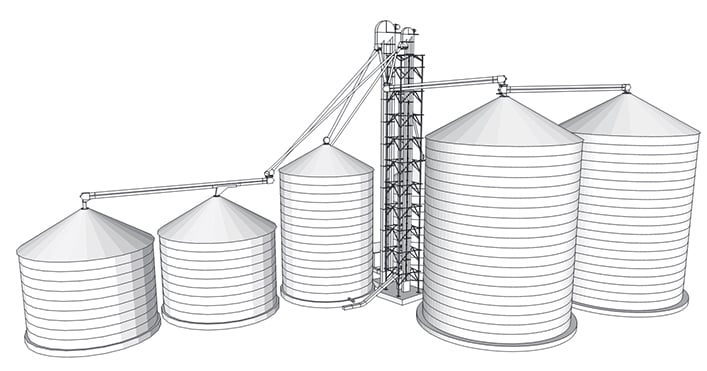
“I can almost guarantee that in 10 years, I will wish that we had put down piers, but right now it was a matter of cost. We now have two of these 190,000-bu. bins, and I have space for three more. Eventually, the small footprint and lack of piers will hamper our expansion. We’ll find a way to make it work.
“Another thing we did to increase our efficiency was to install side draws on the bins. When it’s 30 below, gravity is our friend. We don’t have to start engines or electric motors or augers. The side draw spout is about a third of the way from the bottom. You just pull a chain to open the chute and fill a B-train in five minutes. Any grain in the top two-thirds can be pulled out in this manner. No need for power.”
Erlandson says the GSI TopDry is a unique system he saw on numerous farms throughout the upper Midwest states and southern Ontario. He notes that farmers in these areas have been heavily into corn and soybeans for a long time, and they’re at the leading edge of these technologies. He says that for someone who didn’t know what they were looking at, it just looks like a regular grain bin.
“For my elevator, I needed drying capacity and storage capacity and the TopDry gave me both.
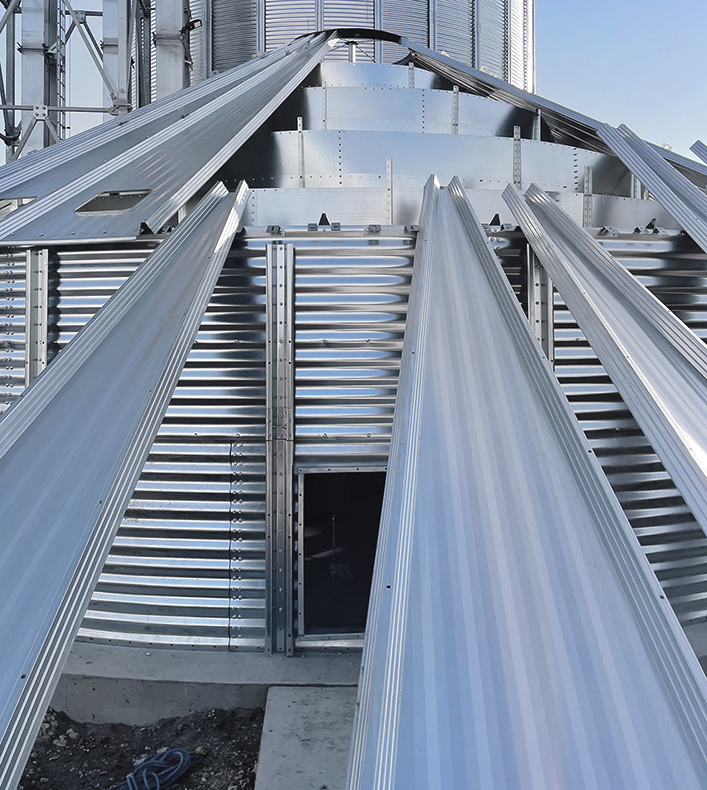
“We can dry 1,500 bushels per hour removing 10 points of moisture. Of course, it depends on your incoming moisture. It first goes into the wet bin. From there it’s continuously moved into the top of the dryer.
“When moisture is down to where we want it, the system drops hot dry grain into the storage bin below. From there, the two VersaLoop systems continuously haul grain to whichever dry bin we want.
“We went with the VersaLoop because it’s a simple chain and paddle. There’s very little maintenance. We had one that the chain needed to be tightened, but other than that they’ve been totally reliable.”
Located close to the town, Erlandson had only a short run to bring in three-phase power. Natural gas provides the heat. He said everything on site is built to commercial standards, which is a higher standard than on-farm grain handling infrastructure. A recent tweet from a farmer at Brazilton, Kansas, bears out the need for higher criteria.
“If you intend to fill and empty that often you need a bin designed for commercial use. If a farm storage bin is designed to live through 75 unloads, it will probably have a long and useful life. If a receiving bin at a feed mill is designed to live through 75 unloads, it might not make it through the first year.”




